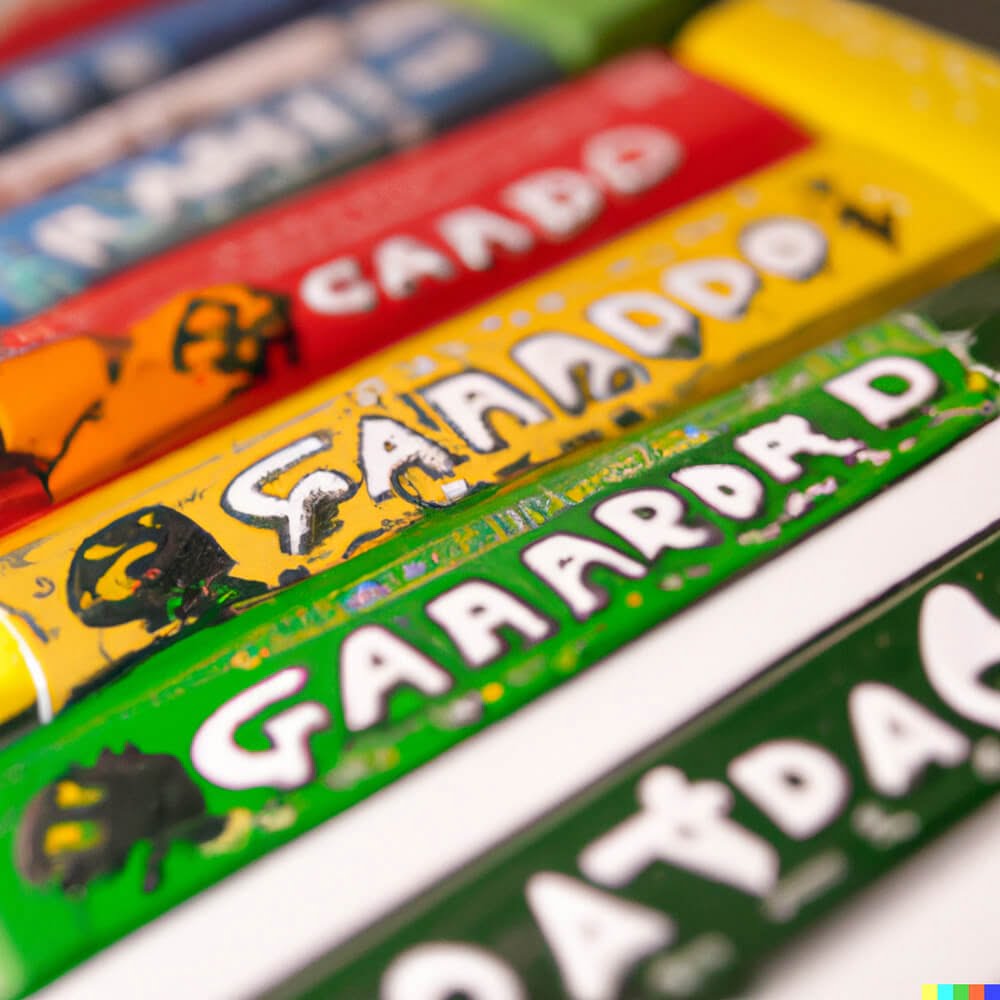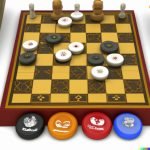Are you ready to take a trip down memory lane and revisit the classic Monopoly board game spaces and tokens? Since its creation in 1935, Monopoly has captivated players of all ages with its iconic game board and beloved tokens. This enduring popularity has solidified the game’s status as a timeless classic, with its recognizable spaces and tokens becoming ingrained in popular culture.
As one of the most well-known board games worldwide, Monopoly has a rich history that spans over 85 years. Its enduring appeal can be attributed to its simple yet engaging gameplay, which involves buying properties, collecting rent, and bankrupting opponents. The classic Monopoly board features familiar spaces such as Park Place, Boardwalk, and the infamous Jail, which have become synonymous with the game’s strategic and competitive nature.
The classic Monopoly tokens also hold a special place in the hearts of enthusiasts. From the battleship to the top hat, these game pieces each have their own unique origin story that adds to their charm. Whether you’re team thimble or team racecar, there’s no denying the nostalgic attachment to these beloved tokens that have withstood the test of time.
Join us as we delve into the fascinating world of classic Monopoly board game spaces and tokens. From exploring coveted properties to uncovering fun facts about the game, we’ll take a closer look at what makes this timeless classic an enduring favorite among board game aficionados. So roll the dice and get ready for a journey through decades of Monopoly history.
Overview of the Classic Monopoly Board
The classic Monopoly board is a timeless and beloved game that has been entertaining families and friends for decades. Featuring a colorful and iconic design, the Monopoly board consists of 40 spaces that players move around as they buy properties, collect rent, and strategize their way to victory. Each space on the board holds its own significance and plays a crucial role in the overall gameplay experience.
One of the most recognizable spaces on the classic Monopoly board is “Go,” which serves as the starting point for all players. Landing on this space allows players to collect $200 in salary as they begin their journey around the board.
Another significant space is “Jail,” where players may find themselves if they land on the “Go to Jail” space or draw a certain Chance or Community Chest card. While in Jail, players can still collect rent from their properties but cannot move around the board until certain conditions are met.
The “Free Parking” space is often a source of confusion among new and casual players, as there are various house rules surrounding this space. Officially, Free Parking does not have any special gameplay mechanics; however, some households may introduce rules that involve collecting fines or taxes in a central pot that can be won by landing on Free Parking.
Additionally, properties such as Boardwalk, Park Place, and Marvin Gardens are highly coveted due to their high rent value and potential for hotel development.
Overall, each space on the classic Monopoly board has its own significance and adds depth to the overall gameplay experience. Understanding these spaces and how they interact with one another is essential for aspiring Monopoly champions seeking victory in this classic game of strategy and negotiation.
| Classic Monopoly Space | Significance |
|---|---|
| Go | Starting point for all players; collects $200 in salary |
| Jail | Player may go here for certain conditions; can still collect rent but cannot move until certain requirements are met |
| Free Parking | No official gameplay mechanics; subject to various household rules; some versions have no special rules at all |
In-Depth Look at the Classic Monopoly Tokens
The classic Monopoly board game is not complete without its iconic tokens, each with its own unique origins and significance. The history of the game’s tokens dates back to its early days, offering an interesting glimpse into the evolution of this beloved pastime.
The original Monopoly set featured six tokens: the battleship, the cannon, the iron, the racecar, the rocking horse, and the thimble. These distinctive game pieces were chosen to represent different aspects of daily life in the 1930s. Over time, some of these tokens have been replaced with more modern symbols, reflecting changing cultural trends and interests.
One of the most well-known tokens in Monopoly is the top hat, which has remained a constant presence throughout various editions of the game. It represents prosperity and wealth – two key elements of the game’s objective. Similarly, other enduring tokens like the dog and the wheelbarrow have become synonymous with Monopoly and are instantly recognizable to players around the world.
| Monopoly Token | Origin |
|---|---|
| Battleship | Added to symbolize naval power during WWII |
| Racecar | Inspired by America’s fascination with automobile racing in the early 20th century |
| Dog | Added as a tribute to man’s best friend and loyal companion |
The Most Coveted Spaces on the Classic Board
One of the most thrilling aspects of playing classic Monopoly is the opportunity to acquire valuable properties on the game board. These sought-after spaces can be the key to building a powerful real estate empire and bankrupting your opponents.
Among the most coveted properties are the dark blue Park Place and Boardwalk, which are known for their high rent values and potential for lucrative development. Securing these two spaces can significantly increase a player’s chances of dominating the game.
Another set of highly desired properties in classic Monopoly are the green color group, consisting of Pacific Avenue, North Carolina Avenue, and Pennsylvania Avenue. These properties hold substantial value due to their relatively low cost to purchase and high rent prices once hotels have been built on them. Players often engage in fierce negotiations and bidding wars to gain control over these lucrative assets.
Furthermore, the orange color group comprising St. James Place, Tennessee Avenue, and New York Avenue is also highly sought after in the game. While their initial purchase price may not be exorbitant, these properties provide a favorable return on investment through substantial rent payments from opponents who land on them. Ultimately, mastering effective negotiation tactics and strategic property acquisition is crucial for success in classic Monopoly.
As players compete to amass wealth and dominate the game board, these coveted spaces become prime targets for acquisition. The intense competition surrounding these properties adds an extra layer of excitement and challenge to the classic Monopoly experience.
Strategies for Winning the Classic Game
Early Game Strategy
In the early stages of the game, it’s important to focus on acquiring properties to build a strong foundation for future success. Aim to purchase as many properties as possible in order to establish a diverse portfolio and increase your chances of earning rent from other players.
Property Management
Once you have acquired properties, strategically manage them by investing in houses and hotels. Upgrading your properties will not only maximize the rent you receive from opponents but also create obstacles for them, making it more difficult to advance on the board.
Negotiation Skills
One of the essential strategies for winning Monopoly is mastering the art of negotiation. Use your bargaining skills to make favorable trades with other players, acquire sought-after properties, and create monopolies in specific color groups. Additionally, be open to making deals that benefit both parties and remember that cooperation can be just as valuable as competition.
By implementing these strategies and staying mindful of your opponents’ moves, you can increase your chances of emerging victorious in the classic game of Monopoly. Whether it’s through shrewd property management, astute negotiations or a combination of different tactics, becoming a Monopoly champion requires skillful gameplay and strategic thinking.
Fun Facts About Classic Monopoly Spaces and Tokens
Origins of the Thimble
One interesting tidbit about the classic Monopoly tokens is the origin of the thimble. When the game was first created in the early 20th century, the thimble was included as a nod to the game’s roots as a commentary on wealth and class. The thimble represented how many women at that time were working-class and often needed to sew their own clothing due to financial constraints.
The Dark History of Electric Company
Another intriguing fact about the classic Monopoly spaces is the dark history behind some of them. The Electric Company space, for example, was actually added to the game in the 1930s as a promotion for General Electric’s involvement with electricity in America. This tie-in with a major corporation was common in early versions of Monopoly, showcasing a different era of marketing and branding.
The Mystery Behind Reading Railroad
One more fascinating trivia about classic Monopoly spaces is the mystery behind Reading Railroad. Despite being named after an actual company, “Reading” is actually pronounced “Redding” like “wedding” because it refers to a small city in Pennsylvania called Reading. The distinction between pronunciation and spelling has puzzled many players over the years, adding another layer of intrigue to this iconic space on the board.
These fun facts and trivia add depth to our understanding of classic Monopoly spaces and tokens, showcasing how history, culture, and even marketing have influenced this beloved game throughout its long-standing legacy. Understanding these tidbits can enhance gameplay experiences by providing context and appreciation for each element on the board.
Unique Editions of the Classic Monopoly Board
There are numerous unique editions of the classic Monopoly board game that offer players a fresh take on the iconic game. These special versions feature different spaces and tokens, adding a new layer of excitement and novelty to the familiar gameplay. Some of the most popular unique editions include:
- Monopoly: Disney Edition – This version of the game showcases beloved Disney characters and locations, replacing the traditional properties with famous landmarks from Disney movies.
- Monopoly: Star Wars Edition – Fans of the epic space saga can enjoy playing as characters such as Luke Skywalker or Darth Vader, while navigating through iconic Star Wars locations instead of traditional properties.
- Monopoly: National Parks Edition – Nature enthusiasts can explore various national parks while playing this edition, which features stunning illustrations of natural landscapes and wildlife.
These unique editions not only offer a fresh visual aesthetic but also introduce thematic elements that enhance the overall gaming experience. Whether it’s immersing oneself in the magical world of Disney, embarking on an intergalactic journey in the Star Wars universe, or appreciating the beauty of nature through national parks, these special versions cater to diverse interests and preferences.
In addition to these popular unique editions, there are countless other variations of Monopoly that celebrate different themes, cultures, and pop culture phenomena. From city-specific editions to special collaborations with renowned brands and franchises, collectors and enthusiasts have a wide array of options to choose from when seeking a new twist on the classic board game.
The Evolution of Classic Monopoly Spaces and Tokens
Throughout the years, the classic Monopoly board game has undergone several changes and updates, particularly with its iconic spaces and tokens. From the original version to various special editions, the game has evolved to keep up with the times while still maintaining its timeless appeal. Here are some key points about the evolution of classic Monopoly spaces and tokens:
- Origins of the classic tokens: The original Monopoly game featured metal tokens that represented various items such as a top hat, thimble, racecar, and battleship. These tokens have become synonymous with the game and are instantly recognizable to players around the world.
- Updates to the tokens: Over the years, Hasbro, the company behind Monopoly, has introduced new versions of the game with updated tokens to reflect changing popular culture and trends. For example, modern editions may feature tokens such as a mobile phone or a laptop to resonate with contemporary audiences.
- Changes to board spaces: While some iconic spaces like Boardwalk and Park Place have remained constant throughout different editions of Monopoly, other properties have been updated or replaced to keep pace with current real estate markets and popular landmarks.
As technology advances and societal interests shift, it’s likely that we’ll continue to see further changes and updates to classic Monopoly spaces and tokens. Despite these alterations, however, one thing remains consistent – the enduring popularity of this beloved board game.
Conclusion
In conclusion, the classic Monopoly board game has managed to withstand the test of time, capturing the hearts of players young and old with its iconic spaces and tokens. From the humble beginnings of its creation during the Great Depression to becoming a staple in households around the world, Monopoly has proven to be a timeless favorite.
The enduring appeal lies not only in the thrill of acquiring valuable properties and amassing wealth but also in the nostalgia and sense of camaraderie it brings to family game nights.
As we reflect on the beloved spaces and tokens that have become synonymous with Monopoly, it’s clear that each element holds a special place in the hearts of fans. Whether it’s racing around the board as the race car or staking claim to Boardwalk and Park Place, these components add a layer of personality and excitement to the game.
The enduring popularity of classic Monopoly serves as a testament to its ability to unite generations over a shared love for competitive fun and strategic gameplay.
In an ever-changing world, classic Monopoly remains a constant source of joy and entertainment for players worldwide. With its timeless spaces and tokens, this beloved game continues to bring people together as they strive for victory in the world of real estate and finance.
As we look ahead, it’s evident that classic Monopoly will continue to hold a cherished place in the realm of board games, inviting new generations to experience the thrill of claiming coveted properties and navigating the ups and downs of economic success.
Frequently Asked Questions
What Are the 7 Original Monopoly Tokens?
The seven original Monopoly tokens are the battleship, boot, thimble, top hat, wheelbarrow, and the iconic racecar. Over time, these classic tokens have become synonymous with the game and have remained a beloved part of its identity.
How Many Spaces Are on a Standard Monopoly Board?
A standard Monopoly board has 40 spaces in total. These spaces include 28 properties that players can purchase or land on, as well as four railroad spaces, two utility spaces, and various other special spaces such as Chance and Community Chest cards.
How Many Tokens Are in a Monopoly Game?
A Monopoly game typically includes eight tokens for players to choose from. In addition to the original seven tokens – battleship, boot, thimble, top hat, wheelbarrow, racecar – there is also a cat token that was added to the lineup in more recent editions of the game.
These tokens are essential for players to move around the board and represent their chosen character during gameplay.

I love playing all kinds of games – from classics like Monopoly to modern favourites like Ticket to Ride.
I created this blog as a way to share my love of board games with others, and provide information on the latest releases and news in the industry.





